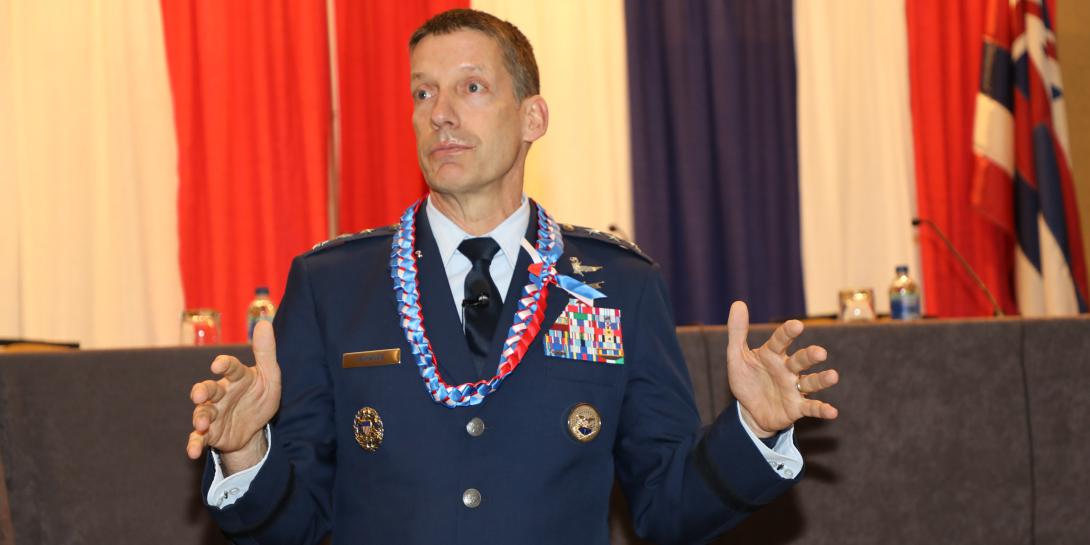DISA Faces the Indo-Pacific
The Defense Information Systems Agency (DISA) is viewing the Indo-Pacific region with a high level of priority as it modernizes information systems across the defense realm. Two significant adversaries pose serious threats that are technology-oriented, both in terms of advantages and disadvantages, and the agency must address those while replacing outmoded systems.
These points were emphasized by DISA director Lt. Gen. Robert J. Skinner, USAF, on the second day of TechNet Indo-Pacific, being held in Honolulu April 11-13. Its theme of “From Data to Dominance” fell squarely in the purview of the information agency, and Gen. Skinner outlined several key elements of his agency’s agenda.
He noted that Russia is drawing everyone’s attention with its invasion of Ukraine, but that is not the only challenge on DISA’s menu. “We can’t just focus on one view,” the general declared. “No matter what is happening in Europe, and there are atrocities there, China is still a pacing threat.”
The U.S. defense infostructure is showing its age, and that affects performance at home and abroad. “Those systems are being pummeled—three to four to five to six times as much each day—by usage, and those systems are old. We’re modernizing them,” he said. The general added that Pentagon leadership realizes the gravity of the situation, and “is more concentrated on cybersecurity and hardening than at any other time.”
Our leadership [in the Pentagon] is more concentrated on cybersecurity and hardening than at any other time.—Lt. Gen. Robert J. Skinner, USAF, director, @USDISA #AFCEATechNet
— Bob Ackerman (@rkackerman) April 12, 2022
For DISA, “There is nothing more important from an agency point of view than prioritizing command and control,” Gen. Skinner stated. He added that both defense and commercial data centers are inadequate for what may be needed. “We do not have the data centers in the right place for a potential future fight.”
Other technology needs include automation to streamline operations, along with software-based systems. “Moving from TDM [time division multiplexing] to software-based is like moving a mountain,” he offered.
Moving from TDM [time division multiplexing] to software-based is like moving a mountain.—Lt. Gen. Robert J. Skinner, USAF, director, @USDISA #AFCEATechNet
— Bob Ackerman (@rkackerman) April 12, 2022
Above all, one problem is system complexity. Some issues are inherent, while others are acquired. “How do we make these systems less complex for users?” the general asked. “What are the organizational characteristics that are crushing their ability to be effective?”
During the question-and-answer session, an audience member raised the issue of the biggest challenge to defending warfighter systems. Gen. Skinner was succinct. “The biggest gap in being able to defend systems for the warfighter is knowing,” he stated. “And it’s not knowing manually, it’s automated.”
I need to know how to better leverage what you [industry] have sold me.—Lt. Gen. Robert J. Skinner, USAF, director, @USDISA #AFCEATechNet
— Bob Ackerman (@rkackerman) April 12, 2022
Ultimately, DISA needs industry to help it grasp the new capabilities the agency is adopting. “I need to know how to better leverage what you [industry] have sold me,” Gen. Skinner declared.





Comments